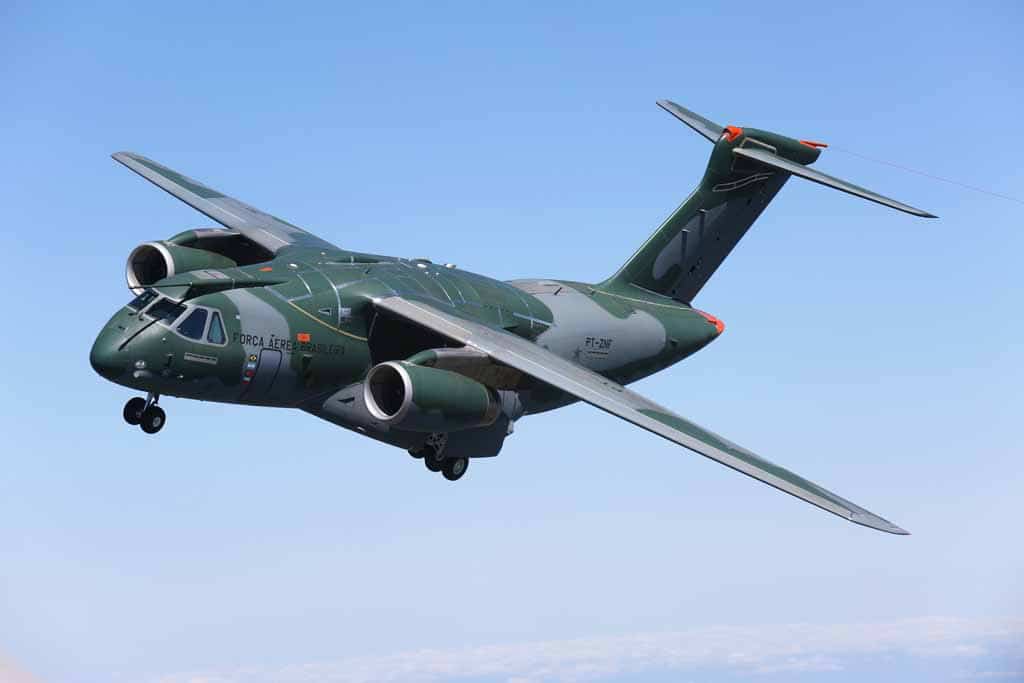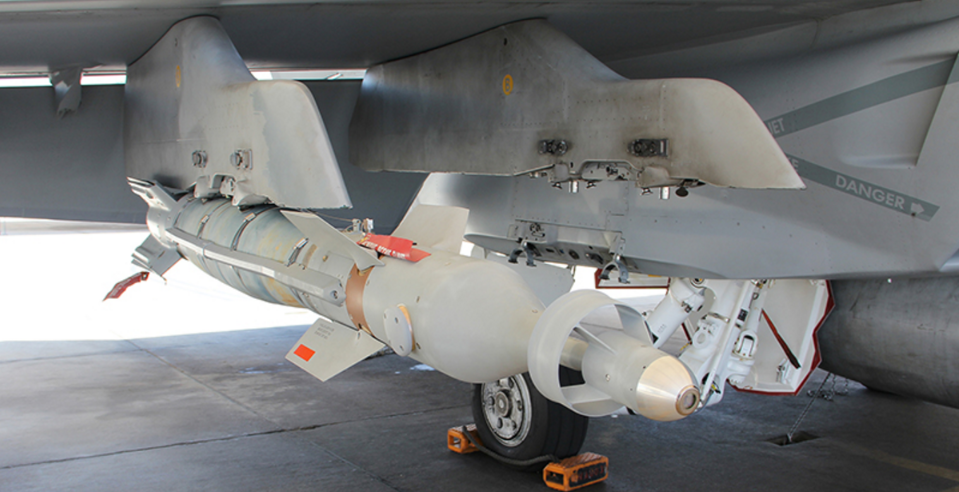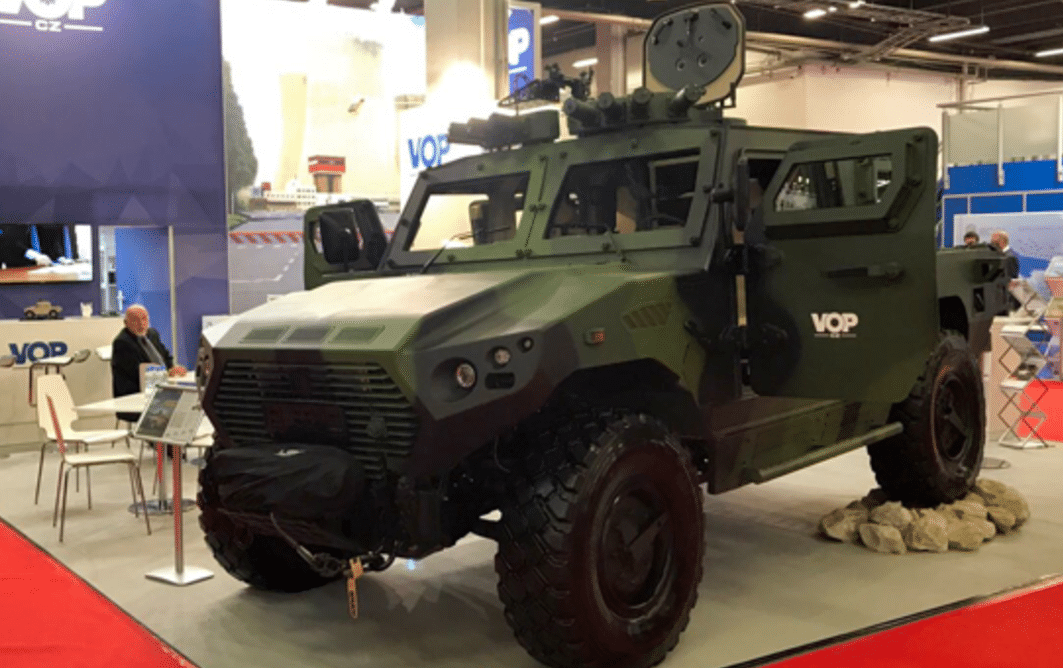2599Views 6Comments

Embraer secures potential KC-390 order from SkyTech
Embraer Defense & Security announced that it signed a letter-of-intent (LOI) with the privately-owned aviation company SkyTech for the sale of six Embraer KC-390 multi-mission transport aircraft. The LOI was signed on 05 February at the Singapore Airshow.
In its press release, Embraer explains that the KC-390s will be “earmarked for multiple defense projects.”
SkyTech is a partnership between HiFly, a Portugal-based ACMI (aircraft, complete crew, maintenance, and insurance) company and Abagold Aviation, an aviation services and charter firm from Australia.
Lauding the LOI, SkyTech President Paulo Mirpuri stated, “We have been following the KC-390 program since its inception and believe that it will be a game-changer in the medium-sized airlift category as well as a multi-role platform.”
This LOI joins earlier negotiations with Portugal for six KC-390s to replace its C-130Hs.
The Embraer KC-390 is being positioned as a next-generation successor to legacy transport aircraft, such as the Lockheed Martin C-130B/E and Antonov An-12 and An-32 aircraft. Embraer envisages a market of 700-plus legacy aircraft in need of replacing, it hopes to generate $1.5 billion US a year in sales.
The KC-390 is a twin-engine jet-powered aircraft capable of ferrying 23 tons to a range of 2,815 km. It uses two International Aero Engines (IAE) V2500-E5 turbofan engines, which Embraer claims provide the KC-390 with the lowest life-cycle costs in the military transport aircraft market.
The V2500-E5 is an ubiquitous commercial airliner engine, powering the Airbus A320.
It is also capable of serving as an in-flight refueling (IFR) tanker. Using Cobham’s Wing Air Refueling Pods (WARP), the KC-390 can refuel combat aircraft through the hose-and-drogue method.
In December 2017, Embraer announced that it has brought the KC-390 to initial operating capability (IOC) with the Brazilian Air Force (Força Aérea Brasileira: FAB). Thus far, Embraer’s two KC-390 prototypes have collectively flown 1,500+ hours along with 40,000 hours of non-flight tests.
In parallel to its immediate commercial efforts, Embraer is also engaged with Boeing to produce a formal partnership, following surrounding concerns of a potential merger.
Recently, Boeing proposed (to the Brazilian government) to raise a jointly-owned subsidiary with Embraer. This new company would be 80-90% owned by Boeing but be built upon Embraer’s commercial airliner business. In other words, Embraer-proper would retain its defence portfolio (i.e. the KC-390).



6 Comments
by Joseph
No matter how fuel efficient and economical V2500-E5 turbofan engines are, I doubt it will be cheaper to run than turboprop airplanes.
So I wonder what the “lowest life-cycle costs” means.
by Bilal Khan
Life-cycle costs involve the direct fuel costs plus cost of maintenance, acquiring spare parts, overhauling, etc. Embraer might be banking on the fact that with the V2500-E5, the end-user of a KC-390 can rely on any one of many companies experienced with that engine. In fact, many prospective KC-390 users already operate A320s via their respective commercial airliners, and some of those may already have a skilled labour pool and MRO base already in place. Turboprops get you better efficiency than turbofans at lower-speeds, but that efficiency drops rapidly in higher speed brackets (with turbofans proving to be better past this threshold).
by Joseph
Thanks for providing an answer for my inquiry. The reason I have those doubts is the fact A400M Atlas is a turboprop aircraft.
From what I understand the advantage of turbofan jet aircraft is the speed, at average speed of Mach 0.8~0.9 they are almost twice as fast as turboprop aircraft (Mach 0.4~0.5), but the disadvantage is that in term of fuel economy turboprop engines are superior. That I think is the reason A400M is a turboprop aircraft and Airbus designed and built a new turboprop engine so A400M can cruise at speed of Mach 0.72, almost as fast as jet aircraft. That way A400M has the best of both worlds.
If using V2500-E5 turbofan engine could achieve lower life-cycle cost, then I see no reason for European nations (which I bet most of them have A320 in their commercial airlines) to go through the process of designing and building a new turboprop engine.
Although A400M project is a huge financial failure and one of the most expensive transport aircraft there is, but I doubt in term of operating cost KC-390 can beat A400M.
by Bilal Khan
Cost wasn’t the only reason for pursuing the A400M. The A400M – which uses propfans, btw, not traditional turboprops – was required to provide heavy-lift in hot-and-high, STOL, etc conditions. The V2500-E5’s performance in these areas is suspect, at best. Also, check the efficiency-to-speed chart of turbofan, turboprop, etc. A turboprop engine will get you better efficiency at lower speed, but that efficiency tapers off sharply at higher speeds. Propfans might provide a solution to that issue, but right now, they’re not as ubiquitous as either traditional turbofans or turboprops. In other words, while fuel costs might be relatively lower, the cost of spare parts, maintenance, etc will be higher.
https://upload.wikimedia.org/wikipedia/commons/0/01/Gas_turbine_efficiency.png
by Joseph
En, I don’t think western Europe has a lot of hot and high places but STOL could also be one of the reasons A400M is a turboprop or as you say propfan aircraft.
Thanks for the info.
by Bilal Khan
Remember: NATO doesn’t plan on just operating in the West, it also caters for potential operations in other regions of the world.